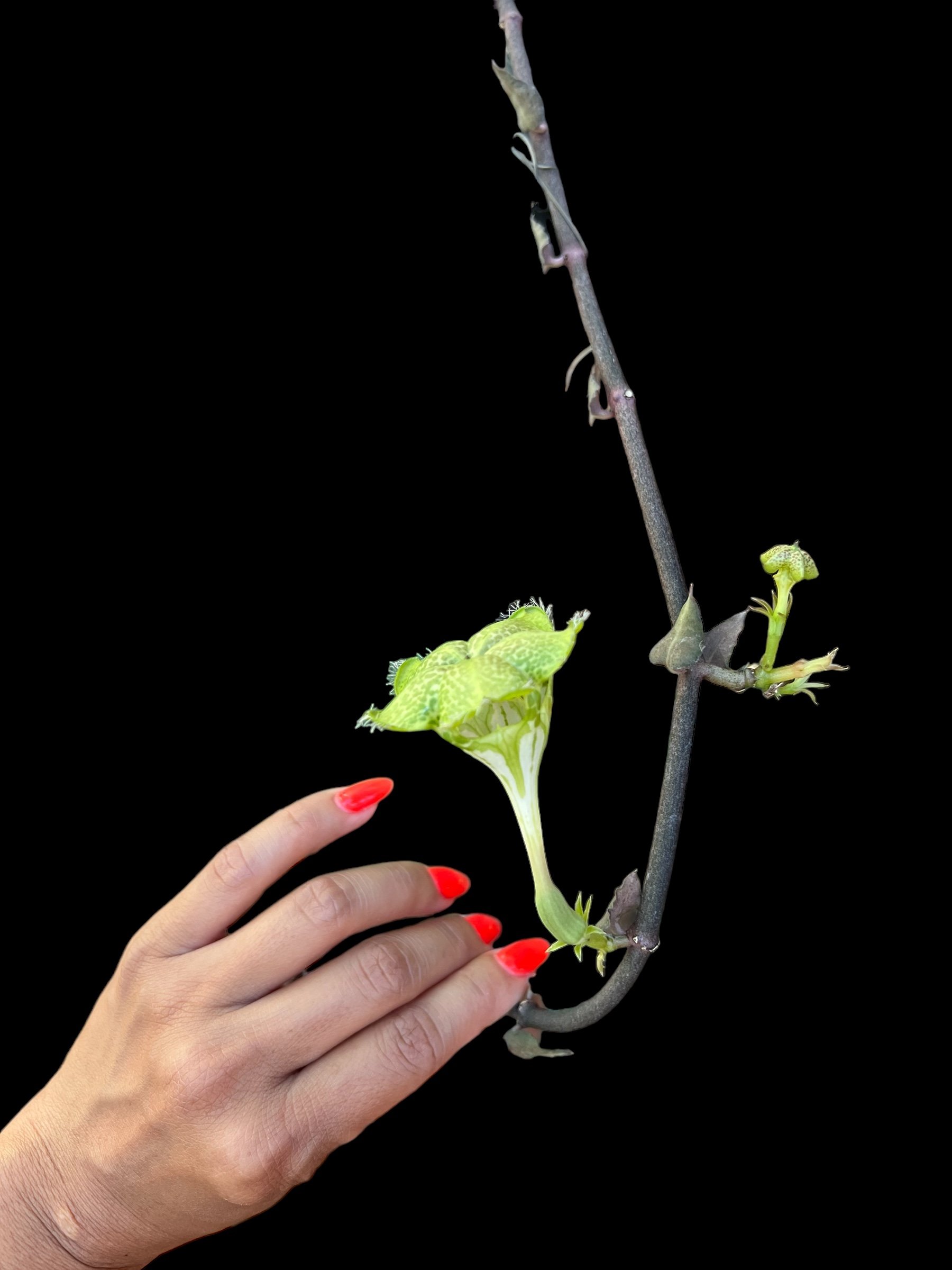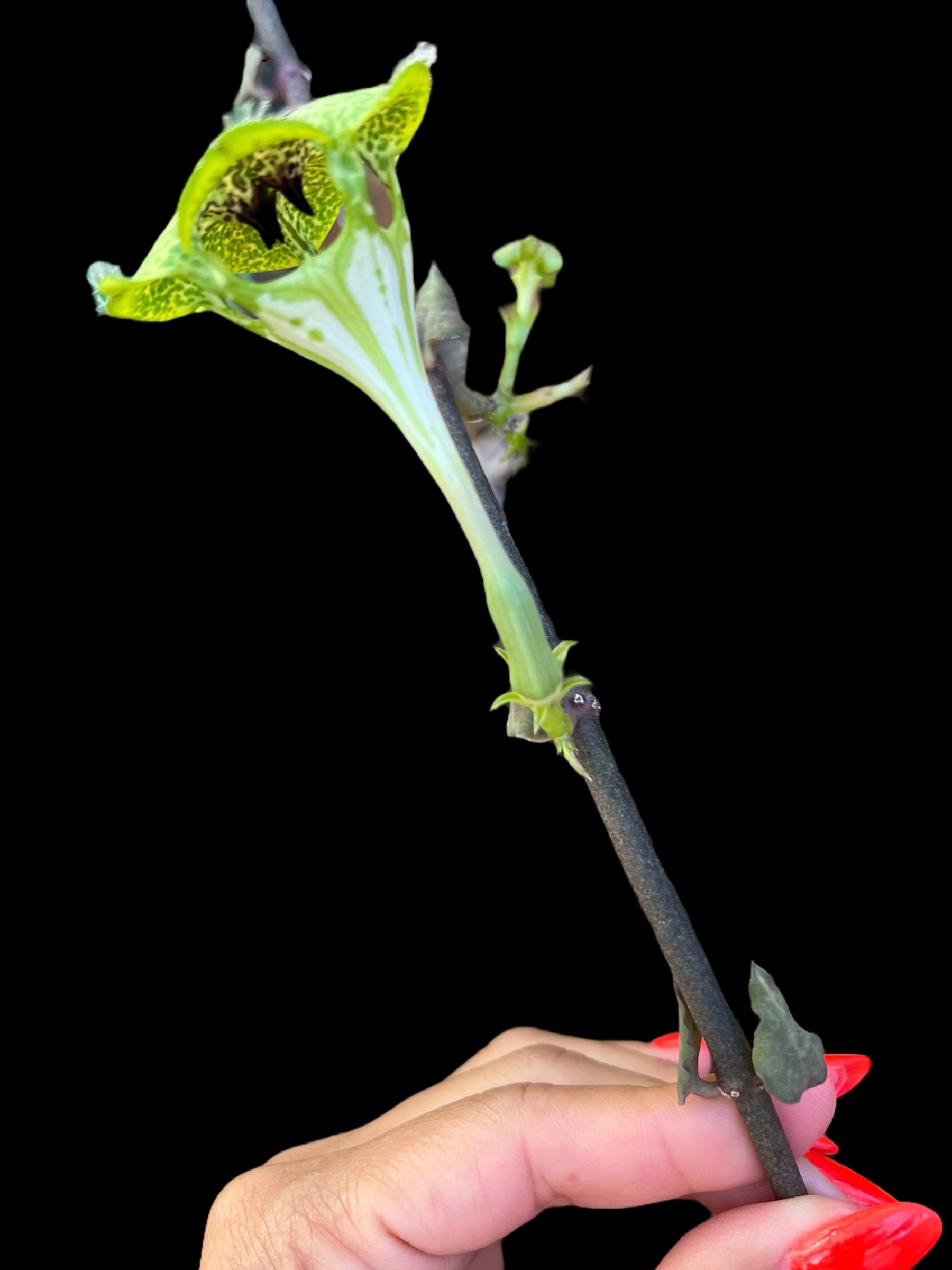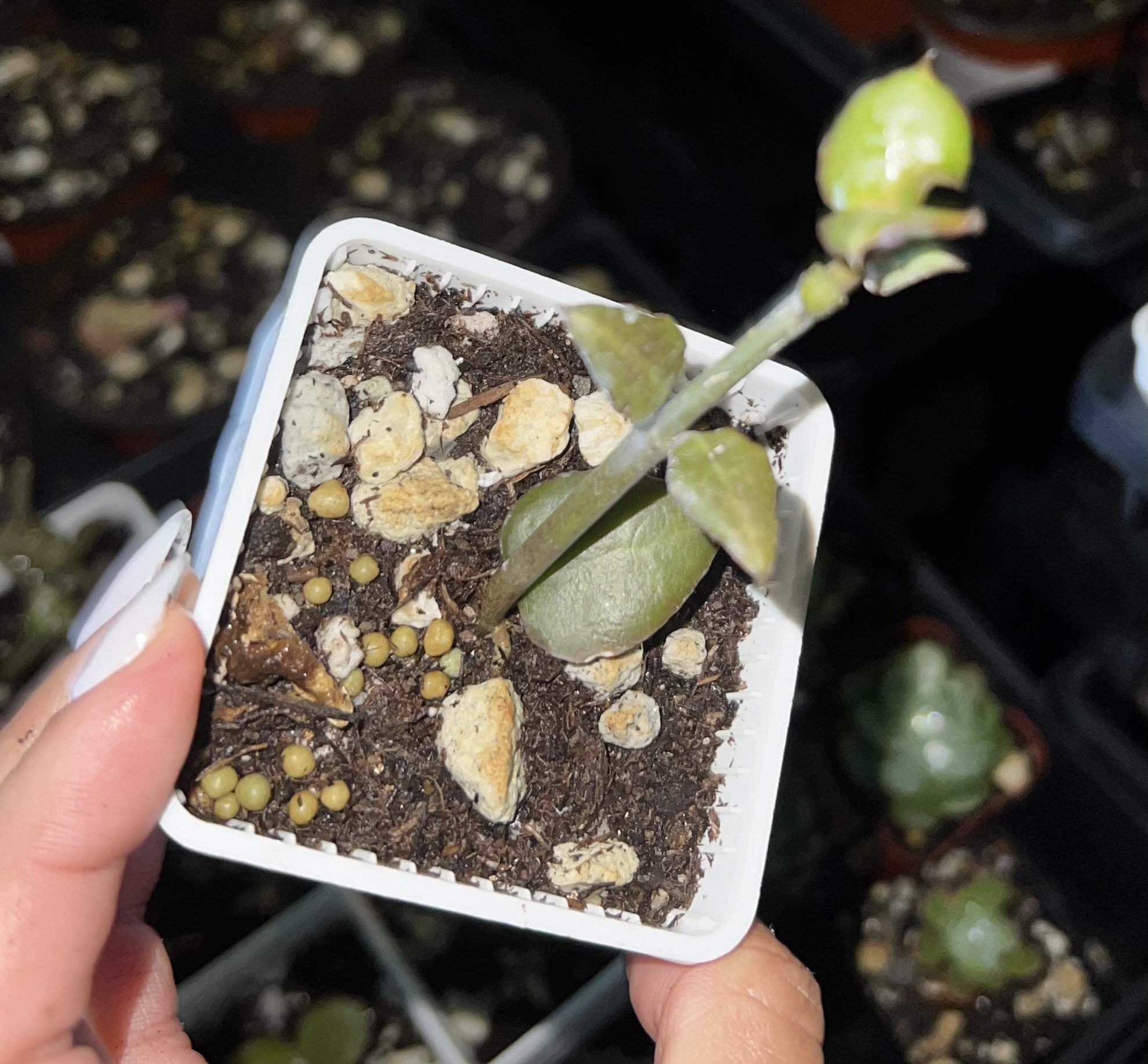Ceropegia Sandersonii Parachute Plant | Unique & Rare Varieties |
Ceropegia Sandersonii Parachute Plant | Unique & Rare Varieties |
Discover the beauty of the Ceropegia Sandersonii, commonly known as the Parachute Plant. This exotic succulent features striking, parachute-shaped flowers that make it a standout addition to any plant collection. Ideal for indoor gardens, it’s an eye-catching piece that's sure to spark conversations.
Product Includes:
1 Ceropegia Sandersonii Parachute Plant
Size: 4 inch (shipping bare rooted, pot is not included)
Care Instruction
How To Care:
Light: Bright, indirect sunlight. If natural light is insufficient, use grow lights positioned about 6 inches above the plant for 12-14 hours per day.
Temperature:Prefers temperatures between 65°F to 75°F (18°C to 24°C). Keep it away from cold drafts and frost.
Watering: Water only when the topsoil feels dry. Thoroughly drench the soil and allow it to dry out completely between
waterings.
Summer: water every few days
Winter: every week or two.
Fertilizer: Use a balanced, diluted fertilizer during the growing season. Minimal fertilization is needed; avoid fertilizing during the summer dormancy period.
Soil: Well-draining, gritty potting soil.
Bloom Time: Usually blooms in the summer.
- Flower Appearance: Unique, parachute-shaped flowers that are greenish with purple spots, truly striking!
Hardiness Zone: 9-11.
Toxicity: Non-toxic to pets and humans
What to expect:
The plant you receive will be the one listed for sale.
1. Initial Inspection: Carefully unpack your succulent and inspect it
2. Rest Period: Allow your succulent to rest for a few days before watering or repotting. This helps it acclimate to its new environment. Place it in a well-lit, airy spot, but avoid direct sunlight initially to prevent sunburn.
3. Watering: Succulents prefer to be underwatered rather than overwatered. Wait at least a week before watering your new plant. Ensure the soil is completely dry before the first watering.
4. Repotting: If your succulent came in a temporary pot, consider repotting it into a well-draining succulent mix. This will provide better conditions for growth.
5. Acclimation: Gradually introduce your succulent to more sunlight. Start with indirect light and slowly move it to a brighter spot over a week or two.
6. Ongoing Care: Succulents thrive with minimal care. Ensure they get plenty of light, water sparingly, and keep an eye out for any signs of stress or pests.
Ceropegia Sandersonii Parachute Plant | Unique & Rare Varieties |
Discover the beauty of the Ceropegia Sandersonii, commonly known as the Parachute Plant. This exotic succulent features striking, parachute-shaped flowers that make it a standout addition to any plant collection. Ideal for indoor gardens, it’s an eye-catching piece that's sure to spark conversations.
Product Includes:
1 Ceropegia Sandersonii Parachute Plant
Size: 4 inch (shipping bare rooted, pot is not included)
Care Instruction
How To Care:
Light: Bright, indirect sunlight. If natural light is insufficient, use grow lights positioned about 6 inches above the plant for 12-14 hours per day.
Temperature:Prefers temperatures between 65°F to 75°F (18°C to 24°C). Keep it away from cold drafts and frost.
Watering: Water only when the topsoil feels dry. Thoroughly drench the soil and allow it to dry out completely between
waterings.
Summer: water every few days
Winter: every week or two.
Fertilizer: Use a balanced, diluted fertilizer during the growing season. Minimal fertilization is needed; avoid fertilizing during the summer dormancy period.
Soil: Well-draining, gritty potting soil.
Bloom Time: Usually blooms in the summer.
- Flower Appearance: Unique, parachute-shaped flowers that are greenish with purple spots, truly striking!
Hardiness Zone: 9-11.
Toxicity: Non-toxic to pets and humans
What to expect:
The plant you receive will be the one listed for sale.
1. Initial Inspection: Carefully unpack your succulent and inspect it
2. Rest Period: Allow your succulent to rest for a few days before watering or repotting. This helps it acclimate to its new environment. Place it in a well-lit, airy spot, but avoid direct sunlight initially to prevent sunburn.
3. Watering: Succulents prefer to be underwatered rather than overwatered. Wait at least a week before watering your new plant. Ensure the soil is completely dry before the first watering.
4. Repotting: If your succulent came in a temporary pot, consider repotting it into a well-draining succulent mix. This will provide better conditions for growth.
5. Acclimation: Gradually introduce your succulent to more sunlight. Start with indirect light and slowly move it to a brighter spot over a week or two.
6. Ongoing Care: Succulents thrive with minimal care. Ensure they get plenty of light, water sparingly, and keep an eye out for any signs of stress or pests.






